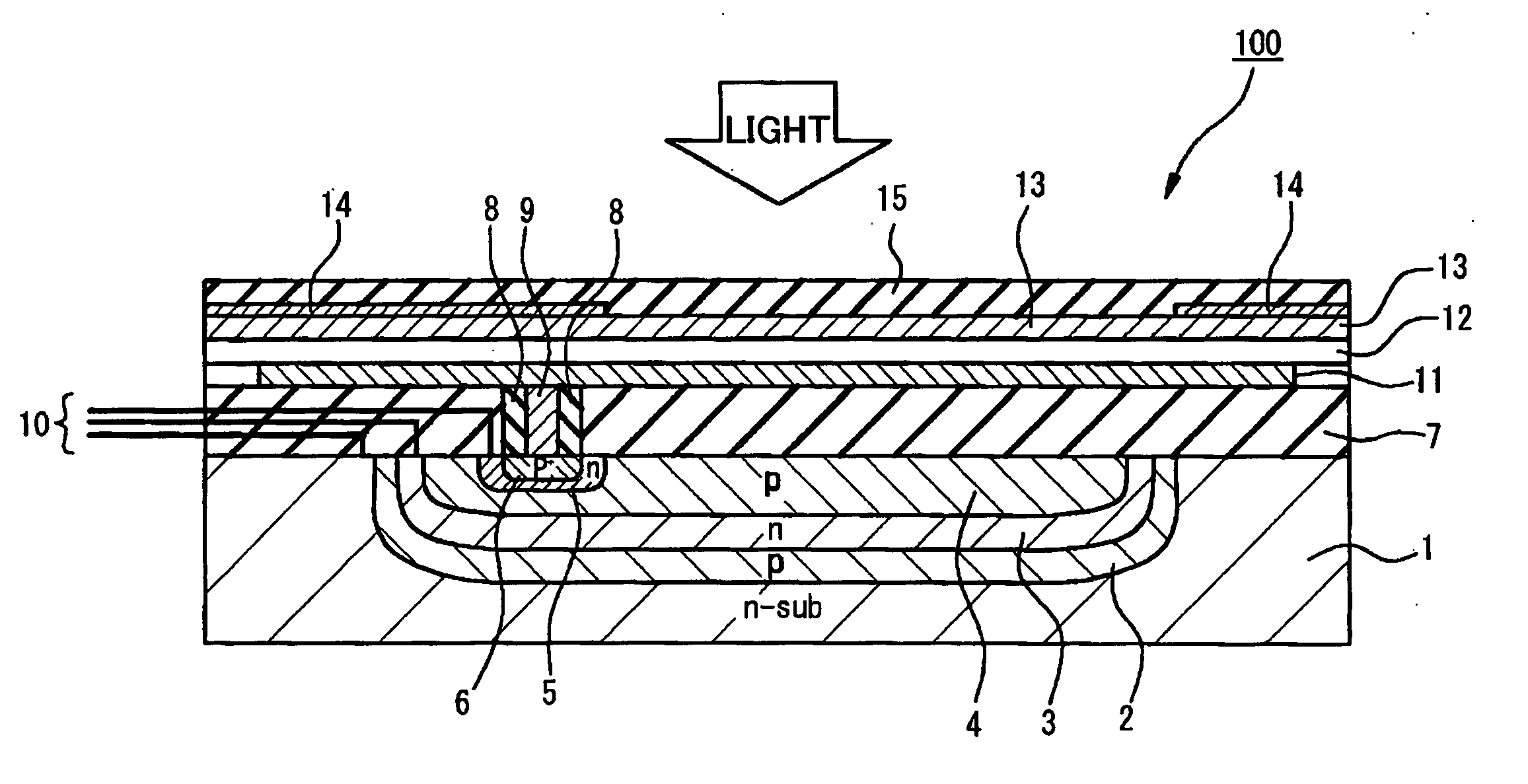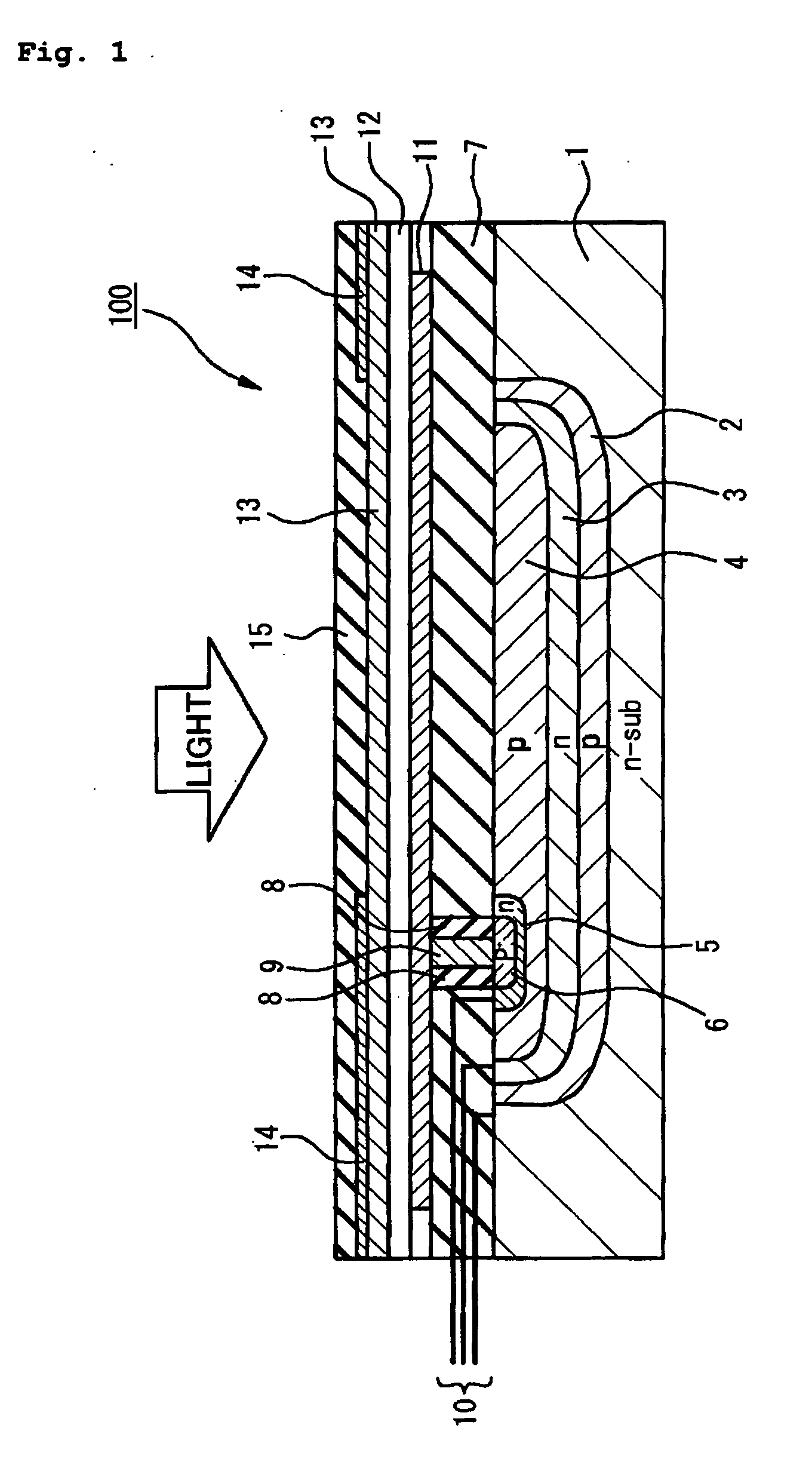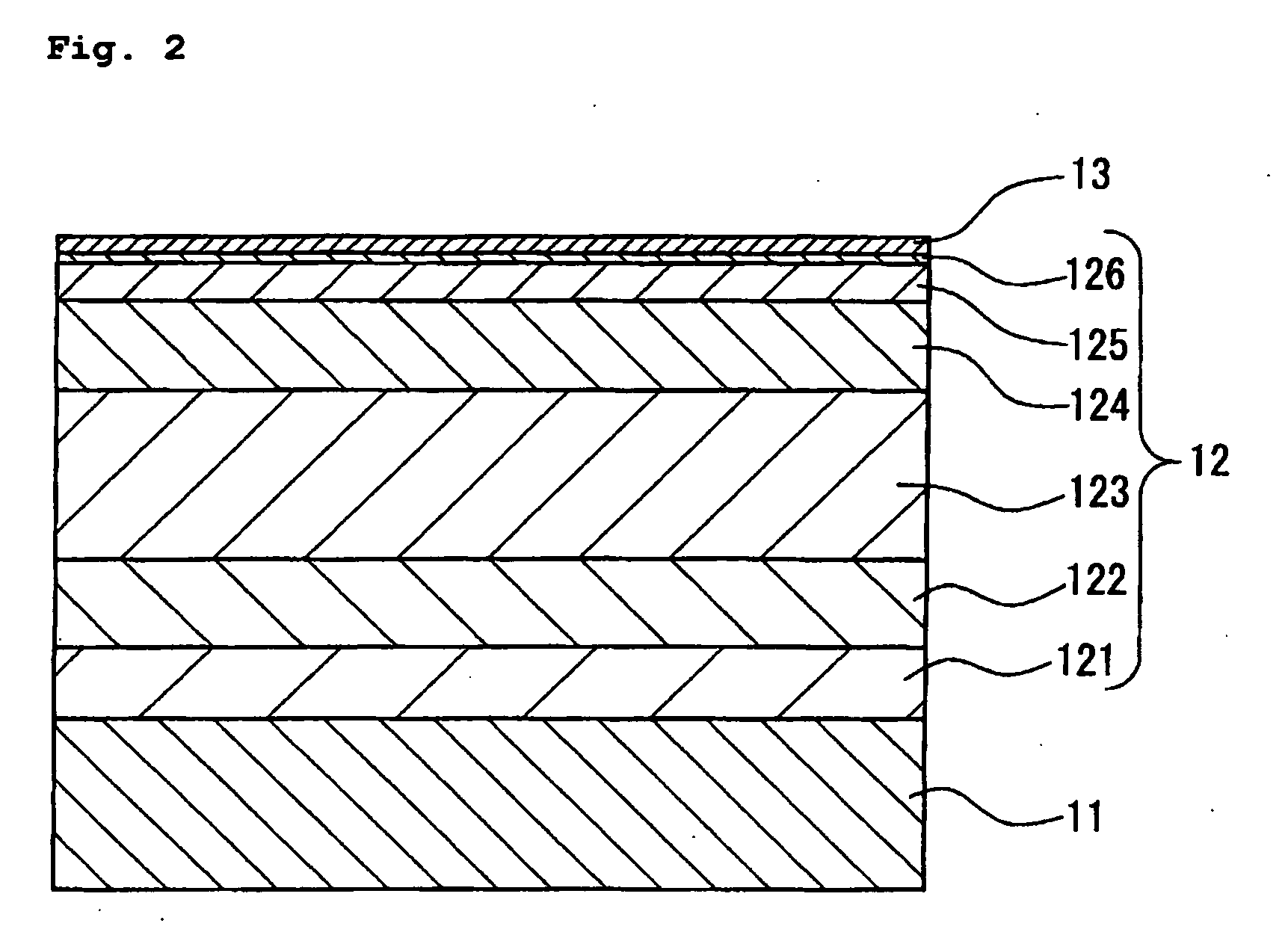Photoelectric conversion device and solid-state imaging device
- Summary
- Abstract
- Description
- Claims
- Application Information
AI Technical Summary
Benefits of technology
Problems solved by technology
Method used
Image
Examples
first embodiment
(First Embodiment)
[0047]FIG. 1 is a cross-sectional schematic view of a portion of one pixel of a solid-state imaging device for explaining a first embodiment of the invention. FIG. 2 is a cross-sectional schematic view of a photoelectric conversion layer as illustrated in FIG. 1. In this solid-state imaging device, a plural number of the one pixel as illustrated in FIG. 1 is disposed in an array state on the same plane, and one pixel data of image data can be produced by a signal as obtained from this one pixel.
[0048] One pixel of a solid-state imaging device 100 as illustrated in FIG. 1 is configured to contain a photoelectric conversion part which is made of an n-type silicon substrate 1, a transparent insulating layer 7 as formed on the n-type silicon substrate 1, a first electrode layer 11 as formed on the insulating layer 7, a photoelectric conversion layer 12 as formed on the first electrode layer 11, and a second electrode layer 13 as formed on the photoelectric conversion ...
second embodiment
(Second Embodiment)
[0112] In this embodiment, the inorganic layer having a configuration as illustrated in FIG. 1 which is described in the first embodiment is prepared in such a manner that two photodiodes are not stacked within the n-type silicon substrate but that two photodiodes are arranged in a direction vertical to an incident direction of the incident light, thereby detecting lights of two colors within the n-type silicon substrate.
[0113]FIG. 3 is a cross-sectional schematic view of a portion of one pixel of a solid-state imaging device for explaining a second embodiment of the invention.
[0114] One pixel of a solid-state imaging device 200 as illustrated in FIG. 3 is configured to contain a photoelectric conversion part which is made of an n-type silicon substrate 17, a first electrode layer 30 as formed in an upper part of the n-type silicon substrate 17, a photoelectric conversion layer 31 as formed on the first electrode layer 30, and a second electrode layer 32 as form...
third embodiment
(Third Embodiment)
[0126] A solid-state imaging device of this embodiment is configured such that the inorganic layer having a configuration as illustrated in FIG. 1 which is described in the first embodiment is not provided and plural (three in this instance) photoelectric conversion layers are stacked in an upper part of the silicon substrate.
[0127]FIG. 4 is a cross-sectional schematic view of a portion of one pixel of a solid-state imaging device for explaining a third embodiment of the invention.
[0128] A solid-state imaging device 300 as illustrated in FIG. 4 is configured such that an R photoelectric conversion part containing a first electrode layer 56, a photoelectric conversion layer 57 as stacked on the first electrode layer 56 and a second electrode layer 58 as stacked on the photoelectric conversion layer 57; a B photoelectric conversion part containing a first electrode layer 60, a photoelectric conversion layer 61 as stacked on the first electrode layer 60 and a second...
PUM
| Property | Measurement | Unit |
|---|---|---|
| Transmittivity | aaaaa | aaaaa |
| Work function | aaaaa | aaaaa |
| Volume | aaaaa | aaaaa |
Abstract
Description
Claims
Application Information
 Login to View More
Login to View More - R&D
- Intellectual Property
- Life Sciences
- Materials
- Tech Scout
- Unparalleled Data Quality
- Higher Quality Content
- 60% Fewer Hallucinations
Browse by: Latest US Patents, China's latest patents, Technical Efficacy Thesaurus, Application Domain, Technology Topic, Popular Technical Reports.
© 2025 PatSnap. All rights reserved.Legal|Privacy policy|Modern Slavery Act Transparency Statement|Sitemap|About US| Contact US: help@patsnap.com



